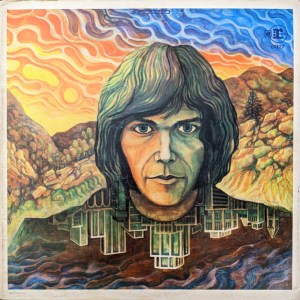
- Amazing sound throughout for Neil’s self-titled debut – shootout winning Triple Plus (A+++) sound or close to it on both sides
- Both sides are rich, full and Tubey Magical with a big bottom end and excellent resolution
- Surely one of Neil’s toughest to find with top quality sound – and only these early pressings with the original mix have the potential to sound as good as this one does
- “…a flowing tributary from the over-all Springfield river of twangs, breathless vocals and slim yet stout instrumentation. Especially vivid is Young’s sense of melancholy and the ingenious clusters of images he employs in his lyrics (printed in full).”
The Old Mix Beats the New Mix
We’ve always felt that this album was not nearly as well recorded as the albums that followed. Why that would be we would never pretend to know. It was a long time ago. Who on earth has the arrogance to think they know precisely what went wrong? (I could actually name a few people but the less said about them the better.)
It turns out the remixed pressings we’d been selling for years were not the way to hear this album at its best. Neil wanted his voice to sound clearer and more present than the first mix, but the approach the engineers took to increase the clarity and presence was simply to boost the middle and upper midrange, a boost that seriously compromises the wonderful Tubey Magic found in the rich lower midrange of the original mix.
Neil may have liked the sound of his voice better on the new mix, played back on whatever mediocre-at-best stereo he was using at the time, but we here at Better Records are of a decidedly different opinion. On a modern, highly-resolving system Neil’s voice will not sound the least bit “buried” on the original mix, not on the best pressings anyway. Of course, the best ones are the only ones we sell.
If you want to hear this album sound right, we strongly believe that the original mix is the only way to go. And if you want to hear this album sound really right, better-than-you-ever-thought-possible right, you need a copy that was mastered, pressed and cleaned properly, and that means a Hot Stamper from Better Records. (more…)

 More of the Music of Lindsey Buckingham
More of the Music of Lindsey Buckingham
 Before then had you ever read a word in any audiophile or record collecting publication about how amazing the originals can sound? Of course not. Most of the audiophile types writing for the stereo rags wouldn’t know a good record from a hole in the ground.
Before then had you ever read a word in any audiophile or record collecting publication about how amazing the originals can sound? Of course not. Most of the audiophile types writing for the stereo rags wouldn’t know a good record from a hole in the ground.



 Yet another wonderful Getz Samba record, the third in the series. Some of our faourite music has this Samba syncopation: Sergio Mendes, first and foremost of course, but also Airto, and all the wonderful Getz albums from this period. Their enchanting Brazilian rhythms make their music fun.
Yet another wonderful Getz Samba record, the third in the series. Some of our faourite music has this Samba syncopation: Sergio Mendes, first and foremost of course, but also Airto, and all the wonderful Getz albums from this period. Their enchanting Brazilian rhythms make their music fun.